Get ready to be enthralled by some of the most famous mausoleums in the world! These architectural wonders are among the most visually stunning structures that you will ever see. Intriguingly, the term “mausoleum” originated from the Mausoleum at Halicarnassus, the tomb of King Mausolus, a prominent Persian leader of the 4th century BC. The immense scale, opulence, and splendor of the Mausoleum at Halicarnassus earned it a place as one of the Seven Wonders of the Ancient World. Regrettably, it was destroyed in a series of earthquakes from the 12th to the 15th century, preventing us from appreciating its magnificence today. However, over the years, countless other jaw-dropping mausoleums have been built all over the world. These remarkable mausoleums serve as the final resting places of many important personalities, including kings, sultans, presidents, and emperors. The following article explores 25 of the Most Famous Mausoleums From Around The World.
Lenin's Mausoleum, Moscow, Russia
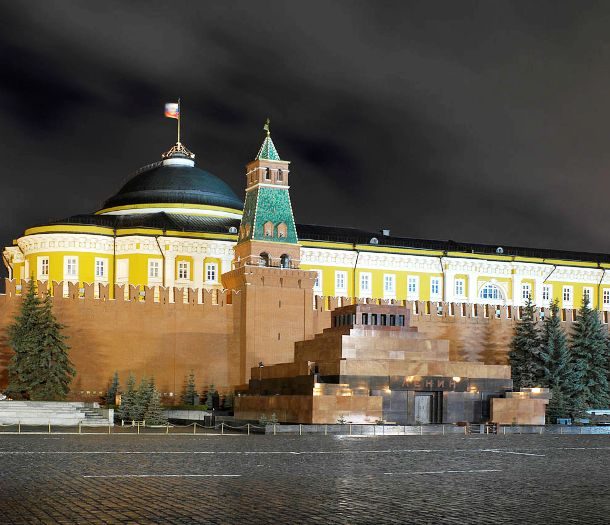 Source: moscow.info
Source: moscow.info Located on the Red Square in the center of Moscow, the Lenin’s Mausoleum serves as the resting place of Vladimir Lenin, a famous Russian communist revolutionary and politician. Accessible to the public, the mausoleum is open daily from 10 am to 1 pm but is closed on Mondays and Fridays.
Mausoleum of Mohammed V, Rabat, Morocco
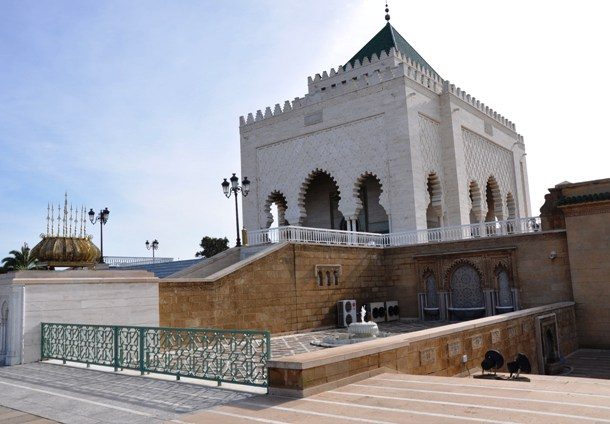 Source: morocco.com
Source: morocco.com A masterpiece of modern Alaouite Dynasty architecture, the Mausoleum of Mohammed VI is easily recognizable by its white walls and green-tiled roof. The interior was finished in white marble. The mausoleum holds the remains of the Moroccan king Mohammed V and his two sons King Hassan II and Prince Abdallah.
Humayun's Tomb, Delhi, India
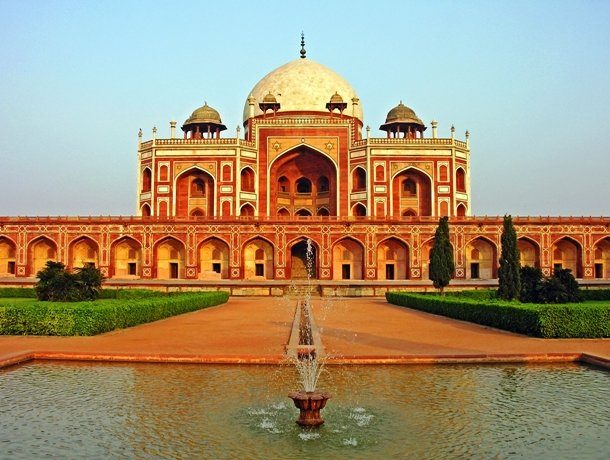 Source: whc.unesco.org
Source: whc.unesco.org The resting place of the Mughal Emperor Humayun, the Humayun’s Tomb is a spectacular mausoleum in Delhi, India. Built in 1570, the tomb is of particular cultural significance as it was the first garden-tomb on the Indian subcontinent. It inspired several major architectural innovations, culminating in the construction of the iconic Taj Mahal.
Mausoleum of Hadrian, Rome, Italy
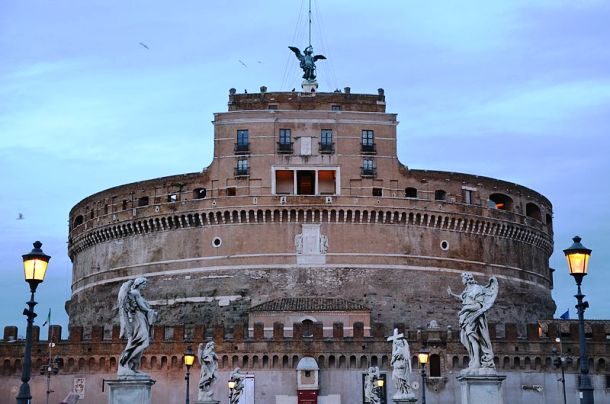 Source: sites.google.com
Source: sites.google.com Also known as Castel Sant Angelo, the Mausoleum of Hadrian is a cylindrical building in Rome, Italy. It was initially commissioned by the Roman Emperor Hadrian as a mausoleum for himself and his family. The building was later used by the popes as a fortress and castle, and is now a museum.
Artigas Mausoleum, Montevideo, Uruguay
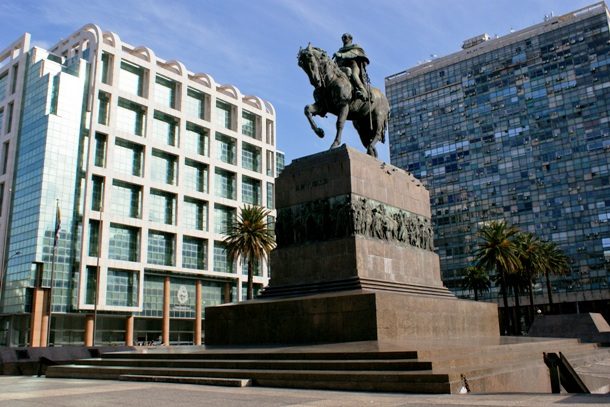 Source: www.welcomeuruguay.com
Source: www.welcomeuruguay.com Holding the remains of the Uruguayan hero Jose Artigas, who is often referred to as “the father of Uruguay”, the Artigas Mausoleum is located in the middle of the Independence Square in Montevideo. Built in the 1930´s, the mausoleum is underneath the statue of Artigas.
Lincoln Tomb, Springfield, Illinois, US
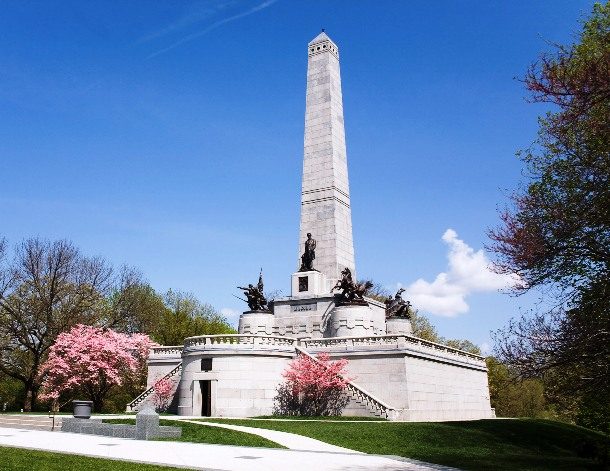 Source: lincolntomb.org
Source: lincolntomb.org Located in the Oak Ridge Cemetery in Springfield, Illinois, the Lincoln Tomb is the final resting place of the 16th President of the United States Abraham Lincoln, his wife Mary, and three of their four sons: Edward, William, and Thomas. Constructed of granite, the tomb was designated a National Historic Landmark in 1960.
Royal Mausoleum of Mauretania, Algeria
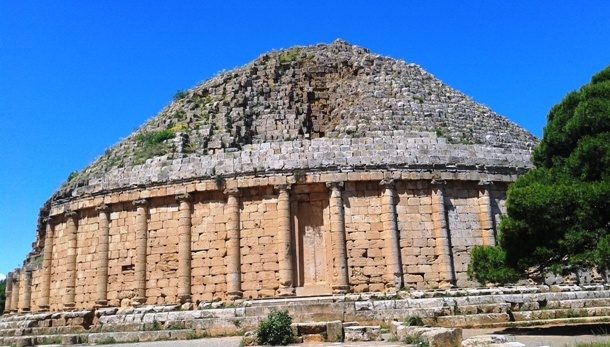 Source: algeria.com
Source: algeria.com The Royal Mausoleum of Mauretania is an ancient historical site that is of significant importance to Algeria and its history. It’s the final resting place of Juba II and Cleopatra Selene II – the last king and queen of Mauretania, an ancient independent tribal kingdom in what is now Morocco.
Mausoleum of Genghis Khan, Xinjie, China
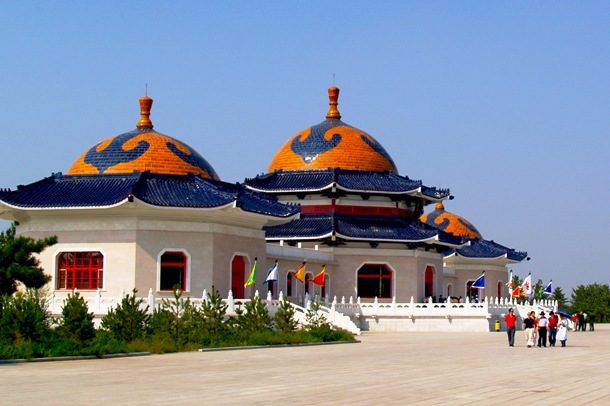 Source: Wikipedia
Source: Wikipedia Built between 1954 and 1956 by the Chinese government in the traditional Mongol style, the Mausoleum of Genghis Khan is one of the most important historical relics in China. The mausoleum is a cenotaph, where the coffin contains no body but only headdresses and accessories as the actual Tomb of Genghis Khan has never been discovered.
Mausoleum of Diocletian, Split, Croatia
 Source: visitsplit.com
Source: visitsplit.com Built in AD 305, the Mausoleum of Diocletian, a famous Roman Emperor, is now a part of the Cathedral of Saint Domnius in Split, Croatia. The cathedral is considered the oldest Catholic cathedral in the world that remains in use in its original structure. It also houses the relics of St Domnius and St Anastasius, martyrs executed in the nearby town of Solin.
Tomb of Jahangir, Lahore, Pakistan
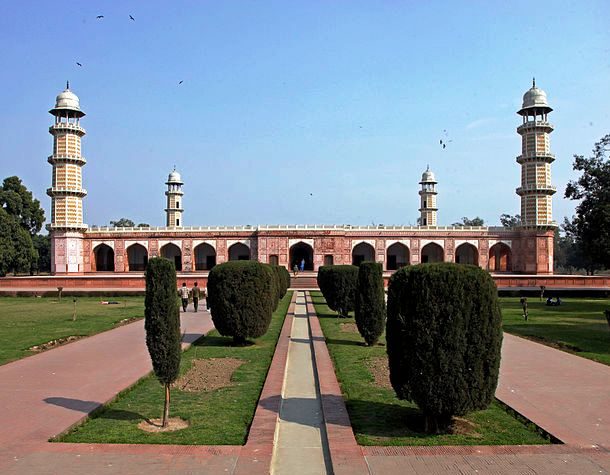 Source: pakistantoursguide.com
Source: pakistantoursguide.com Located in the outskirts of the Pakistan city of Lahore in a place called Shahdara, the Tomb of Jahangir belongs to the famous Mughal Emperor Jahangir who was buried here after his death in 1627. While the tomb’s exterior is restrained, the site is famous for its interiors that are extensively embellished with frescoes and marble.
Ho Chi Minh Mausoleum, Hanoi, Vietnam
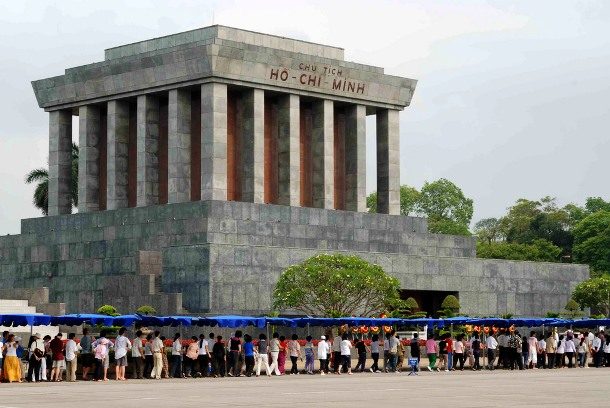 Source: www.vietnamonline.com
Source: www.vietnamonline.com The Ho Chi Minh Mausoleum is an important historical attraction of Hanoi, the capital city of Vietnam. The embalmed body of Ho Chi Minh, a former Vietnamese revolutionary and President, is preserved in the cooled, central hall of the mausoleum. Visiting the Mausoleum is free of charge but involves strict regulations.
Bourguiba Mausoleum, Monastir, Tunisia
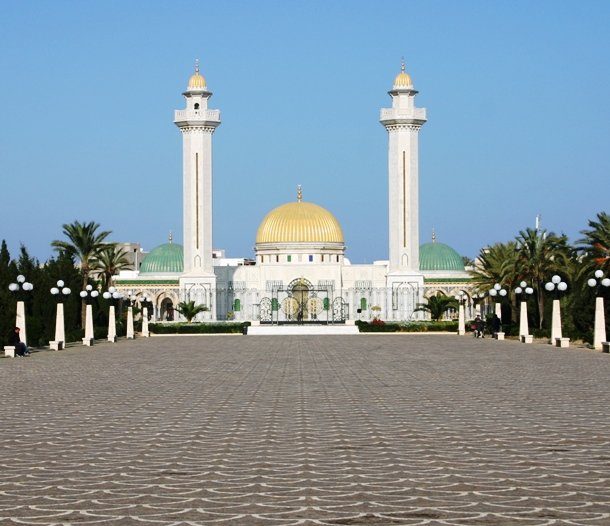 Source: Habib Bourguiba: la trace et l'héritage via Wikipedia
Source: Habib Bourguiba: la trace et l'héritage via Wikipedia Opened in 1963, the Bourguiba Mausoleum is a monumental grave in Monastir, Tunisia, containing the remains of the former president Habib Bourguiba, the father of Tunisian independence. The building is flanked by two 25-m (82 ft) high minarets and topped by a golden dome between two green domes.
Jinnah Mausoleum, Karachi, Pakistan
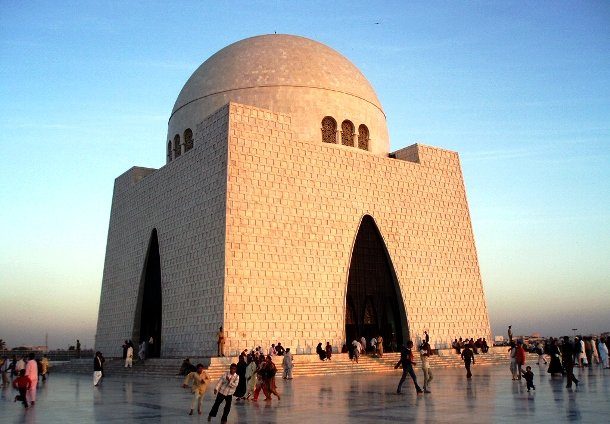 Source: thehistoryhub.com
Source: thehistoryhub.com Also known as Mazar-e-Quaid, the Jinnah Mausoleum is the final resting place of Muhammad Ali Jinnah, the founder of Pakistan. Designed by a Mumbai based Indian architect Yahya Merchant, the mausoleum ranks among the most popular tourist sites in Pakistan, attracting about 10,000 visitors every day.
Mausoleum of Augustus, Rome, Italy
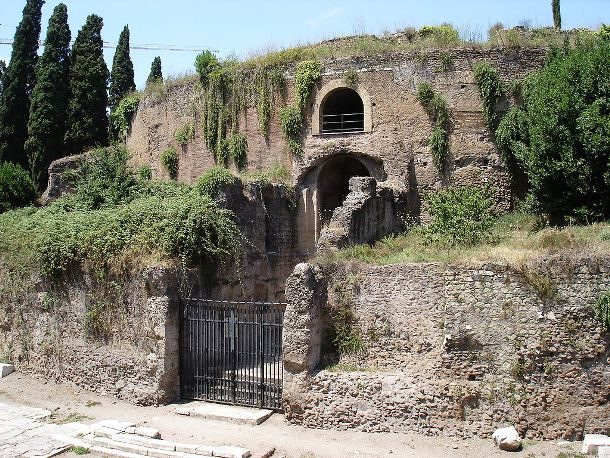 Source: livious.org
Source: livious.org Located on the Piazza Augusto Imperatore in central Rome, the Mausoleum of Augustus is one of the important monuments in the city. The interior of the mausoleum consists of a square inner tomb, where the first Roman Emperor Augustus and his wife Livia are buried. It is a popular tourist site, although the inner tomb is not open to tourists.
Imam Husayn Shrine, Karbala, Iraq
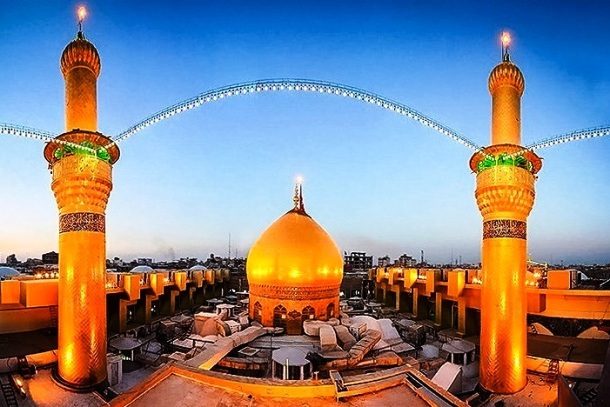 Source: pbs.org via Wikipedia
Source: pbs.org via Wikipedia Imam Husayn Shrine is the mosque and burial site of Al-Husayn ibn ‘Ali, the third Imam of Shia Islam, in the city of Karbala, Iraq. Famous for its lavish decorations, the tomb of Imam Husayn is one of the holiest places for Shi‘ites, outside of Mecca and Medina, and many make pilgrimages to the site.
Grant´s Tomb, New York City, New York, US
 Source: nps.gov
Source: nps.gov Formally known as the General Grant National Memorial, the Grant´s Tomb is the final resting place of President Ulysses S. Grant and his wife Julia. The largest mausoleum in North America, it testifies to a people’s gratitude for the man who ended the American Civil War and strove to heal the nation in post-war years.
National Pantheon of Venezuela, Caracas, Venezuela
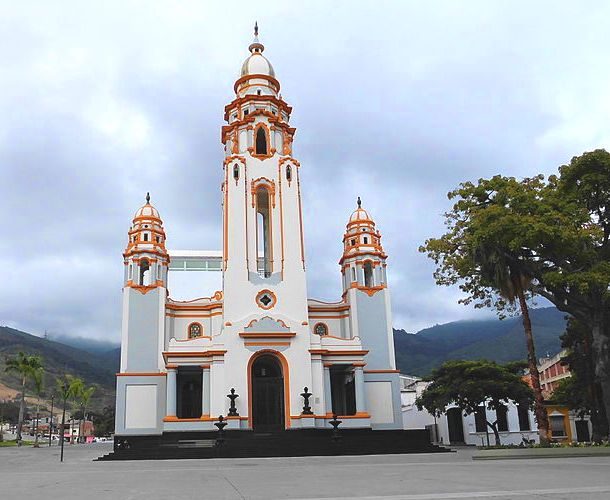 Source: www.findagrave.com
Source: www.findagrave.com Located in the old town of Caracas, the National Pantheon of Venezuela was originally built as a church but is now used as a mausoleum. In 1874, President Antonio Guzmán Blanco decreed the transformation of the church into a National Pantheon to conserve the remains of the heroes of Independence and those of eminent people.
Pantheon, Paris, France
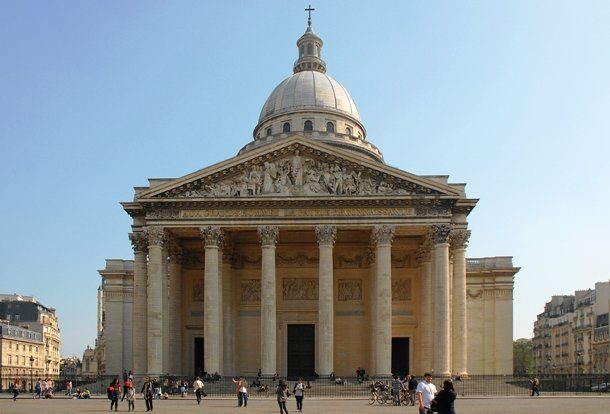 Source: http://www.pantheonparis.com
Source: http://www.pantheonparis.com Situated in the Latin Quarter of Paris, the Pantheon was originally built as a church but after many changes now combines liturgical functions with its role as a famous burial place. An early example of Neoclassicism with a facade modeled after the Pantheon in Rome, it holds the remains of many famous French people such as Voltaire, Rousseau, Hugo, Zola and others.
Qianling Mausoleum, Qian County, China
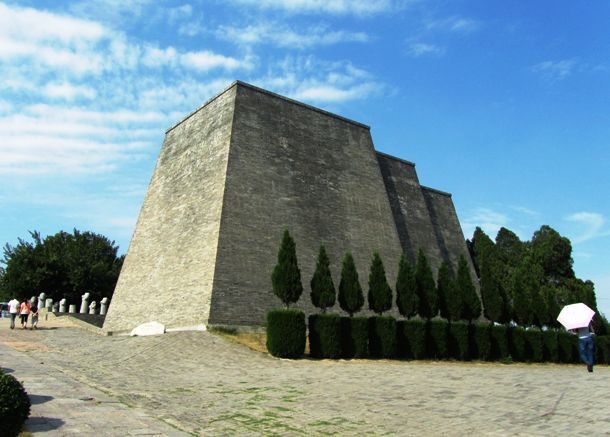 Source: travelchinaguide.com
Source: travelchinaguide.com Dating back to the 7th century, the Qianling Mausoleum houses the tomb of the ancient Chinese Emperor Gaozong and his Empress Wu Zetian of the Tang Dynasty. It occupies a prominent site on the summit of the Liangshan Hill approximately 80 km (50 mi) northwest of the former Tang capital Chang’an (today’s Xi’an).
Great Pyramid of Giza, Giza, Egypt
 Source: ancient.eu
Source: ancient.eu The Egyptian pyramids are also a type of mausoleum. The Great Pyramid of Giza (also known as the Pyramid of Khufu), for example, was the tallest man-made structure in the world for more than 3,000 years (until the Eiffel Tower was completed in 1889). The pyramid contains burial chambers where the ancient Egyptian pharaoh Khufu and his family rest.
Anitkabir, Ankara, Turkey
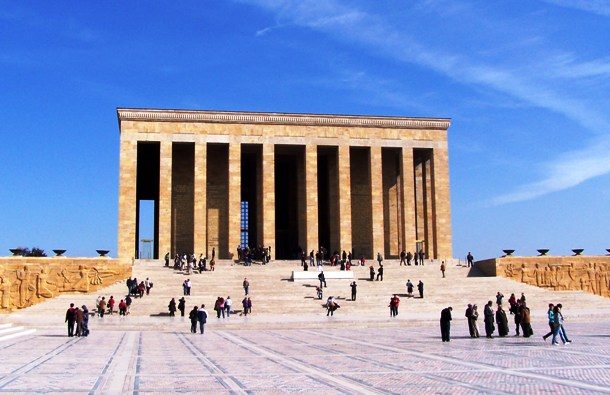 Source: Wikipedia
Source: Wikipedia Located in the Turkey´s capital Ankara, Anitkabir is the mausoleum of Mustafa Kemal Atatürk, the leader of the Turkish War of Independence and the founder and first President of the Republic of Turkey. Completed in 1953, the site is also the final resting place of Ismet Inönü, the second President of Turkey.
Kumsusan Palace of the Sun, Pyongyang, North Korea
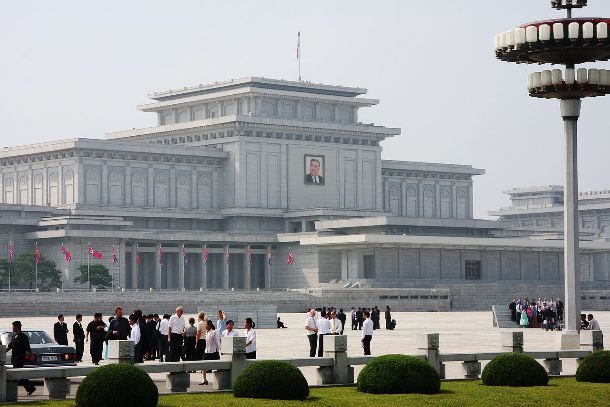 Source: koreakonsult.com
Source: koreakonsult.com The Kumsusan Palace of Sun is the Mausoleum for Kim Il Sung, the founder and “eternal president” of North Korea and for his successor Kim Jong Il. The palace was built in 1976 as the Kumsusan Assembly Hall and served as Kim Il Sung’s official residence but in 1994, the building was renovated and transformed into the Mausoleum.
Monument to the Independence of Brazil, Sao Paulo, Brazil
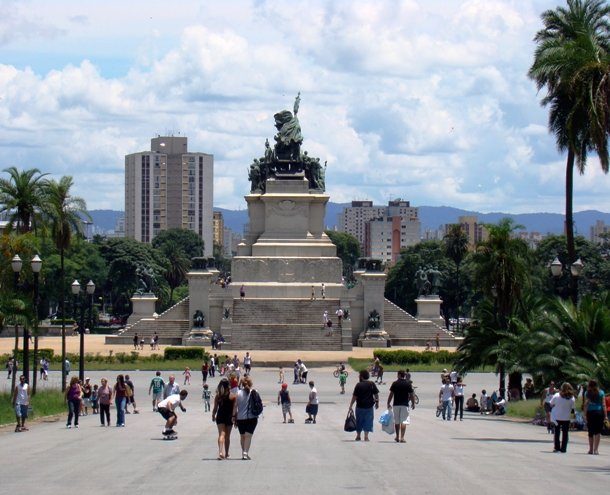 Source: brazilmycountry.com
Source: brazilmycountry.com Located on the historic site in Sao Pauolo where Emperor Pedro I proclaimed Brazilian independence from Portugal in 1822, the Monument to the Independence of Brazil features a group of sculptures made of granite and bronze. In 1952, a crypt with the remains of the Emperor and his wife was added to the monument.
Saints Peter and Paul Cathedral, Saint Petersburg, Russia
 Source: saint-petersburg.com
Source: saint-petersburg.com Considered the highest Orthodox Church in the world, the Saints Peter and Paul Cathedral is a remarkable cathedral and mausoleum, housing the remains of almost all Russian emperors and empresses from Peter the Great to Nicholas II. The graves of the rulers and their families are very extravagant and lavishly decorated, just like the cathedral itself.
Taj Mahal, Agra, India
 Source: http://whc.unesco.org
Source: http://whc.unesco.org Built in the Indian city of Agra between 1631 and 1648 by order of the Mughal emperor Shah Jahan in memory of his favorite wife, the Taj Mahal is arguably the most famous and impressive mausoleum in the world. Made from white marble, it is the jewel of Muslim art in India and one of the universally admired masterpieces of the world’s heritage.
Lists Going Viral Right Now
Image Credit: 1. Shutterstock, 2. Alexxx1979 via commons.wikimedia.org CC BY-SA 3.0, 3. Rodrigo Soldon via commons.wikimedia.org CC BY 2.0, 4. Mark Scott Johnson from Sydney, Australia via commons.wikimedia.org CC BY 2.0, 5. Darwinek via commons.wikimedia.org CC BY-SA 3.0, 6. Shutterstock, 7. 猫猫的日记本 via Commons.wikimedia.org CC BY-SA 3.0, 8. Camille Gévaudan via Commons.wikimedia.org CC BY-SA 3.0, 9. Carlosmatalive via commons.wikimedia.org CC BY-SA 3.0, 10. Maria Azzurra Mugnai via commons.wikimedia.org CC BY 3.0, 11. Tasnim News Agency via commons.wikimedia.org CC BY 4.0, 12. ryarwood via commons.wikimedia.org CC BY-SA 2.0, 13. Public Domain, 14. Tony Hisgett via commons.wikimedia.org CC BY 2.0, 15. M M via Flickr CC BY-SA 2.0, 16. SohaibTahirST via commons.wikimedia.org CC BY-SA 3.0, 17. Carole Raddato via Flickr CC BY-SA 2.0, 18. Samxli (talk) via commons.wikimedia.org CC BY 3.0, 19. Rabah rahmouni via commons.wikimedia.org CC BY-SA 3.0, 20. W. R. Oswald via commons.wikimedia.org CC BY-SA 3.0, 21. ViviAC via commons.wikimedia.org CC BY-SA 3.0, 22. Carole Raddato from FRANKFURT, Germany via commons.wikimedia.org CC BY-SA 2.0, 23. Dennis Jarvis from Halifax, Canada via commons.wikimedia.org CC BY-SA 2.0, 24. Jorge Lascar via commons.wikimedia.org CC BY-SA 3.0, 25. Andrew Shiva via commons.wikimedia.org CC BY-SA 4.0.



























